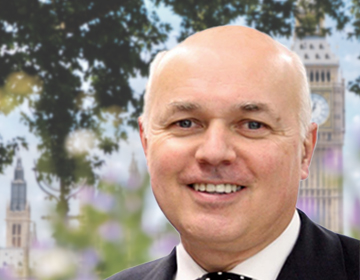Three quarters of local authorities are set to increase their council tax by the maximum amount in April as they complain of ‘the most difficult circumstances in decades.’
Research from the County Councils Network has found that 84 councils out of 114 who have published their 2023/34 budget proposals so far plan to raise council tax by the maximum permitted which is 4.99 per cent.
With inflation running at 10.5 per cent, the network claims local authorities face multi-million funding gaps which have built up and which they need to close to balance their budgets for 2023/24.
Council leaders say they recognise the cost of living pressures for residents, but have reluctantly put forward maximum rises because they have ‘little choice’ in order to set a balanced budget and to fund local services which will be vital for struggling households.
The changes will come in April at the start of the new financial year. Councils are able to levy a maximum of 4.99 per cent should they chose to do so – a total of 2.99 per cent for general council tax and a further 1.99 per cent for the adult social care precept, which is ring-fenced for care services.
Government funding levels for 2023/24, particularly for care services, are predicated on councils taking the maximum council tax rise.
In total, 114 councils out of 152 have published their budget proposals for 2023/24. CCN data shows that all councils bar one plan on raising council tax next year. In total, 113 councils have put forward council tax rises.
A total of 84 of these authorities have put forward maximum rises – 4.99 per cent.The remaining 38 councils have yet to declare their intentions. Three councils – Croydon, Thurrock and Slough – have special dispensation to propose rises over 4.99 per cent..
A total of 30 councils have put forward council tax rises but have declined to levy the maximum. These rates vary across the country with the lowest rise put forward at 2.0 per cent.
The average Band D household will see their bills rise by £99 a year with a 4.99 per cent increase, though this will vary across the country. Split across a year this equates to £1.91 a week, with councils arguing that such a rise is necessary to protect vital local initiatives and allow them to invest in improving public services.
The typical Band D council tax bill for residents in rural county areas is over £2,000 a year and will rise to £2,149 on average with a 4.99 per cent rise. This is 20% higher than average bills faced by residents in London from April, with Band D households facing an average of £1,780 per year.
This is because county areas have historically received lower government funding than London for services and councils have to make up the shortfall through higher taxation.
The network claims that some county local authorities face some of the largest funding deficits in the country as a result of inflation and demand pressures.
Even accounting for a 4.99 per cent council tax rise, Hampshire County Council (which gets 89 per cent of its revenue from local tax) faces a £57.7m funding deficit in 2023/24 which the authority says will have to be filled by reserves.
Durham Council faces a £10.2m deficit even after proposing £12.4m in savings and a 4.99 per cent council tax rise. Cheshire East Council faces a deficit of £25.4m which will be filled through savings and council tax rises.
We're excited to announce that we're working on building a shiny new website for readers of Landlord Today! As part of this process, commenting on articles will be temporarily disabled. We look forward to sharing our new and improved Landlord Today website with you shortly!







.png)

(1).png)







.jpg)






%20(002).png)




